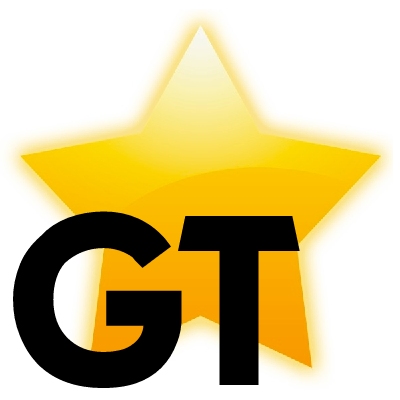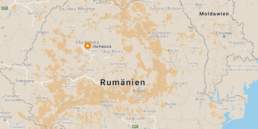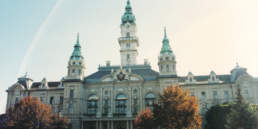Remember Europe on Track, the train-travelling AEGEE project which won the Charlemagne Youth Prize a couple of years ago? It’s back! The interest in the network to be part of this initiative is huge: “171 members applied for the six traveller positions”, says AEGEE-Europe’s Vice-President Réka Salamon, who managed the first two editions. 31 antennae want to organise related events – only 20 will have the chance. “We are spending this weekend selecting the lucky travellers and locals”, adds Réka. “It’s not easy!” Together with the project team members Alper Guvercin (AEGEE-Utrecht) and Oguz Tosun (AEGEE-Ankara) she told the Golden Times more about this successful project!
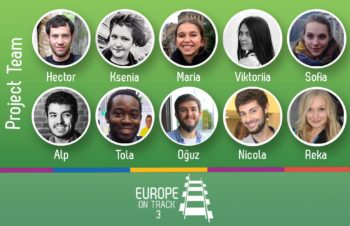 GT: Europe on Track goes into the third edition. What’s new this time, what’s different?
GT: Europe on Track goes into the third edition. What’s new this time, what’s different?
Alper: Europe on Track will bring back the same energy and mobilizing the network – that is the same for all editions! However, this year we wanted to give a more focused approach by selecting one central topic and that will be a debated one in today’s Europe: “Borderless Europe – borders in Europe”. We will also have fewer hosting locals for the project because the previous editions have proven to a lot of fun but also a very exhausting journey for the travellers. Instead of more than 30 locals, we will try to keep the number around 20 and have more quality time in each city.
GT: Can you describe the structure and aim of this project in three or four sentences?
Oguz: Europe on Track is a youth-led project where six travelling ambassadors cross Europe by train, informing and interviewing young people about their vision of the Europe of tomorrow through a live travel blog and videos. The project will engage hundreds of people by interviewing – and gather thousands of young Europeans’ stories, struggles and visions for the future. The theme “Borderless Europe – borders in Europe” will be in the focus of the travel during their one-month journey across Europe.
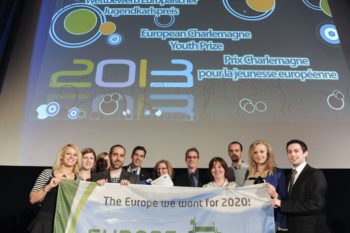
GT: When do the travellers start? And how long does the trip last?
Réka: The start is on 20th of April. They will finish in Bergamo, just on time for the Agora!
GT: You were looking for people with blogging and audio-visual skills. That sounds like a good plan, because in the first edition the daily reports looked better than in the second edition. What do you expect precisely?
Oguz: Youth activities with different concerns all around the world share a common point: the importance of social media. In fact, the achievement of a project in the social media directly depends on its blogging and audio-visual capacity. Thus, we expect a great job by our Europe on Track people day by day.
GT: The trip can be pretty exhausting. What kind of people should the travellers be?
Alper: We are encouraging young people with deep interested in cultural diversity.
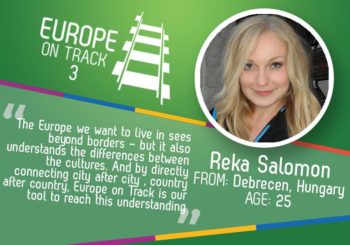 GT: Can you tell some funny or exciting anecdotes of the past two editions?
GT: Can you tell some funny or exciting anecdotes of the past two editions?
Réka: The travellers probably have more funny anecdotes. From my side, all I remember was the endless hours spent with the preparation and emails and well, receiving unexpected calls from the travellers in case of on-the-spot emergency situations. They could definitely count as fun highlights. Well, one funny incident I did have during the first edition of Europe on Track when I actually had to break into the AEGEE headoffice, which was the previous one, coming back from Aachen with the box of EoT hoodies because no one was home. I had no keys and the travellers were arriving to Brussels the next day…
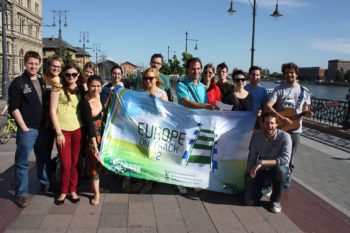
GT: You are also looking for hosting locals, which are organising local events. In the past, this was a weaker point of this great project. How can that be improved?
Réka: I have come to understand that this is a difficult element because all locals understand “local event” differently. I have given them a lot of ideas and specifications on what the event could look like, but I did not want to tell them what to do exactly… The two sides were hard to meet. For the third edition we are developing a toolkit for hosting locals to better help the locals’ preparation.
GT: Can these events also be international events?
Réka: The events should be organised by the AEGEE local, but they should also be open to non-AEGEEans, local youth, interested citizens – and this year we will make an extra effort and take the Europe on Track interviews to the streets, involving citizens at popular spots all over the cities!
 GT: Sounds excellent. Should the events have specific topics?
GT: Sounds excellent. Should the events have specific topics?
Alper: The topic Borderless Europe was chosen in order to give a general theme – but also to give enough freedom for the local organisers to reflect on what is the most important for their area or country. The topic can explore the economic difficulties in each country that local youth is experiencing, the social context on how people look at a borderless Europe and European diversity, it can also explore young people’s opportunities in a borderless Europe and how it could change with the borders reinstalled. There are a lot of options that will be detailed in the locals’ toolkits!
GT: Are you planning big final conferences at the end of the trips?
Réka: Bergamo should be an ideal final spot to end the running time of the project. The conference that will have the bigger external impact is going to be at the beginning of the project: Europe on Track will be launched in the European parliament on the 20th of April.
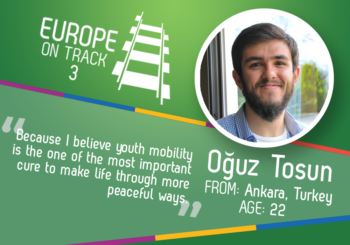 GT: Réka, you coordinated the project twice, is it basically your baby. Will you also coordinate it for a third time?
GT: Réka, you coordinated the project twice, is it basically your baby. Will you also coordinate it for a third time?
Réka: Europe on Track has been one of the most valuable experiences I had in AEGEE. More than that – as it has been pointed out many times before: my baby. For the third edition however, I am happy to hand it over to the hands of a very motivated and organised project team of nine people who have been working hard to put all aspects of the project together. Knowledge transfer and setting things “on track” requires still quite some time, but all in all I am really happy to have a team I can trust. We need more long-term and sustainable projects in AEGEE, apart from the Summer Universities. We could have a Europe on Track every year!
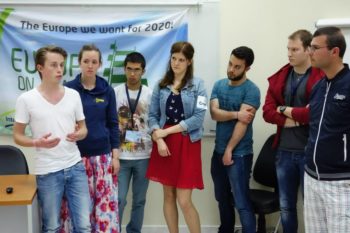
GT: The project won the Charlemagne Youth Prize, thanks also due to your work. In your AEGEE career, which does this mean for you?
Réka: Personally, my proudest moment. For AEGEE it is another milestone in our history when we showed what a group of dreamers is capable of achieving – and how our work can also be recognised by decision-makers. This definitely gives the project team a strong motivation to work for the third edition. We know that was a beginning for us. Now, it is time to bring the future editions into action, maybe with new prizes!
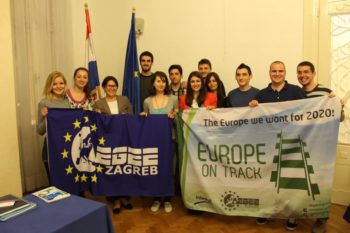
GT: Réka, aren’t you tempted to make the trip yourself?
Réka: Being in the CD, I am more tempted nowadays, to just get on the road and talk to all the locals to really understand what they are doing, what they need and how they see AEGEE. It would be a really valuable element in AEGEE-Europe’s endless effort to keep its actions connected to the network… On the other hand, the endless hours of travelling and being always in action for sure would be too exhausting for introvert me.
GT: Anything else you would like to add?
All: We are excited more than ever since we have gained lots of social and political experience on the topic of youth during the last two editions. However, we know that we are going to observe a crucial global human crisis for the third edition: the refugee issue. Thus we hope we can make a small contribution to the solution of this problem by means of cultural diversity!
